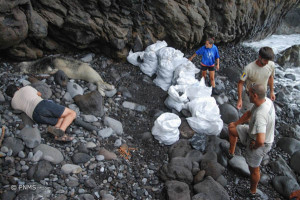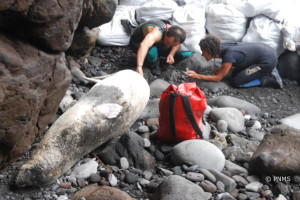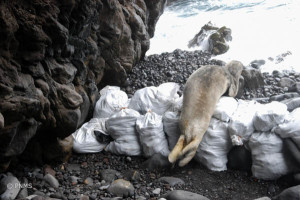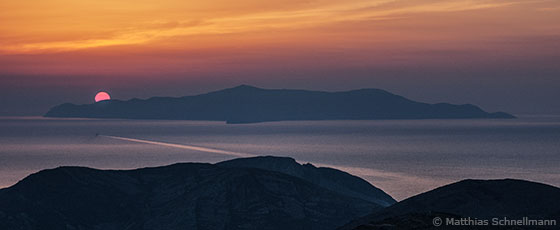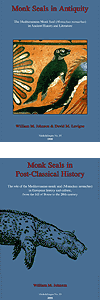
Over the years, there has been much confusion over the origins of the monk seal’s name, as well as many imaginative explanations. Here are a few to be going on with. Can you identify the correct answer? If you think you can, please post your answer below. We’ll be posting our reply about a week from now.
How did the Monk Seal Find its Name?
(1) Because the black seal with the white belly patch was reminiscent of the robes of a monastic community.
(2) Because the monk seal is shy and retiring, living a “monastic” lifestyle.
(3) Because of the folds of fat around the neck of the seal were reminiscent of a monk’s hood or scapular.
(4) Because the rows of seals stretched out lazily on the sands reminded Roman naturalist Pliny the Elder of a procession of hooded monks.
(5) None of the above.
To answer these and other historical puzzles on the Mediterranean monk seal, you may wish to read our illustrated two-volume “Monk Seal Histories”, available here in PDF format.


